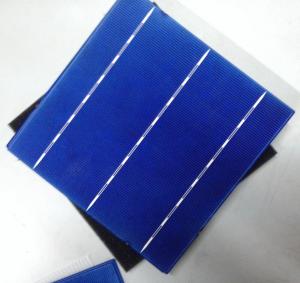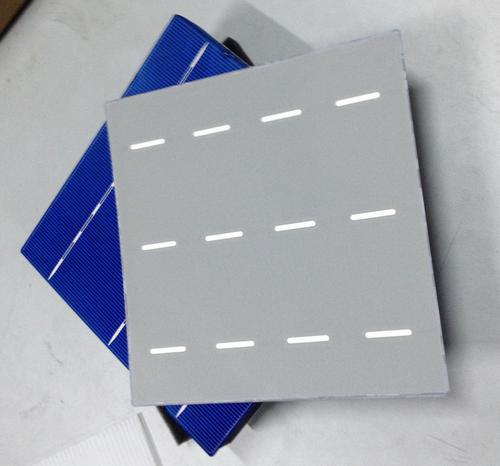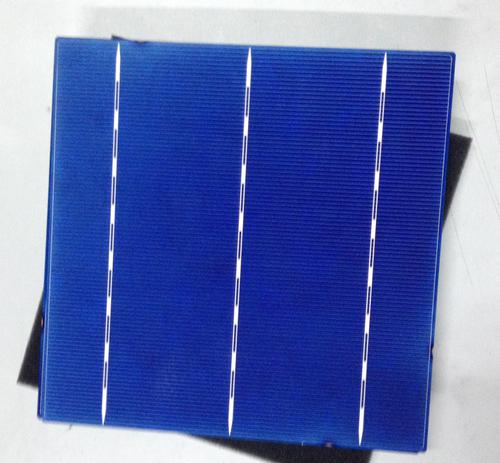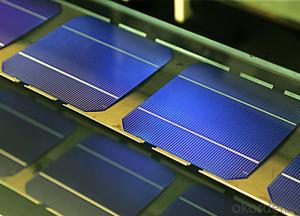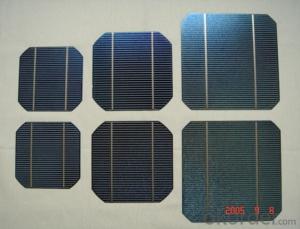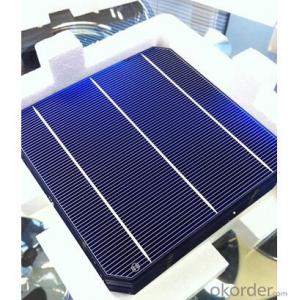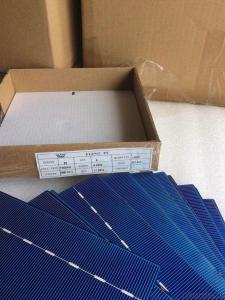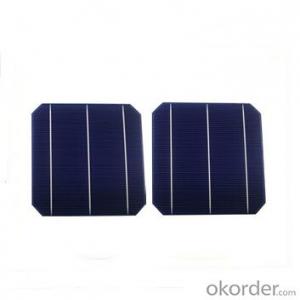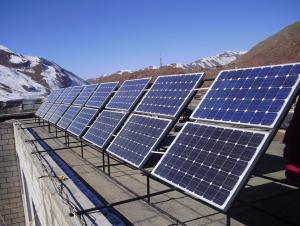Purchase Solar Cells Bulk - World-Beating 25-Year Life, 17.6% Efficiency
- Loading Port:
- Shanghai
- Payment Terms:
- TT OR LC
- Min Order Qty:
- 1000 pc
- Supply Capability:
- 5000000 pc/month
OKorder Service Pledge
OKorder Financial Service
You Might Also Like
Brief Introduction of Solar Cells
A solar cell, is an electrical device that converts the energy of light directly into electricity by the photovoltaic effect, which is a physical and chemical phenomenon. It is a form of photoelectric cell, defined as a device whose electrical characteristics, such as current, voltage, or resistance, vary when exposed to light. Solar cells are the building blocks of photovoltaic modules, otherwise known as solar panels.
Introduction of our Company
Our core business is the design and manufacture of III-V epitaxial material used in cellular phones and other wireless devices, and the design and manufacture of solar cells and solar sheets for a variety of applications, including unmanned aerial vehicles (UAVs), spacecraft, and terrestrial collectors.
Founded in 2000, we are well equipped to conduct its business. The company occupies a 30,000 square foot facility in Niles, a northern suburb of Chicago, Illinois. The facility contains a clean room and device fabrication and test laboratory. We own all the tools and equipment necessary to grow, fabricate, and test epitaxial material and solar cells and sheets. The company owns a set of metalorganic chemical vapor deposition (MOCVD) tools capable of high volume production. We also possess the tools and equipment required to fabricate and test semiconductor device structures and solar cells.
We are dedicated to producing quality products to meet customer needs. We are an ISO 9001-certified company. Production begins only after we are sure that all required customer specifications have been met. In order to ensure the quality of our products, we employ sophisticated quality control processes.
We prides itself on the quality of its employees. Some members of our technical staff are among the world’s foremost experts in the growth and processing of GaAs- and InP-based electronic devices and solar cells. Our staff supports customers, not only during the product development period, but also during production in order to enable continuing improvements in final product performance and yield.
We also performs contract research and development. Since 2003, we have been a prime federal contractor on more than thirty programs to develop solar cells, transistors, and lasers. A key result of this innovation has been the development of the epitaxial lift-off (ELO) process, which uses in its line of solar cell and solar sheet products. We have also supported other companies in the performance of their research and development programs. Many of the innovations developed at our have been incorporated into commercial products.
Specifications of Polycrystalline Solar Cells
Format : 156 mm × 156 mm ± 0.5 mm
Thickness: 210 μm ±40 μm
Front (-) : 1.5mm bus bars (silver),blue anti-reflection coating (silicon nitride)
Back (+) : 2.5mm wide soldering pads (silver) back surface field (aluminium)
Efficiency (%) | Pmpp (W) | Umpp (V) | Impp (A) | Voc (V) | Isc (A) |
18.00% | 4.38 | 0.528 | 8.291 | 0.631 | 8.869 |
17.80% | 4.33 | 0.525 | 8.252 | 0.629 | 8.821 |
17.60% | 4.29 | 0.532 | 8.053 | 0.633 | 8.541 |
17.40% | 4.23 | 0.528 | 8.092 | 0.624 | 8.632 |
17.20% | 4.19 | 0.524 | 7.992 | 0.62 | 8.458 |
17.00% | 4.14 | 0.52 | 7.972 | 0.623 | 8.5 |
Advantage of Polycrystalline Solar Cells
1. Tire-1 Solar Cells’ Manufacturer Quality Guarantee. With a complete and sophisticated quality government system, our Quality Management have arrived world’s leading place. Customer can receive Tire-1 Cells Maker’s Quality Standard Products.
2. Trusted Warranty. We can supply trusted after-sales service to our customer. If our cells are found not in conformity to the specification of manufacturer, or should the inspected quantity found in shortage, or should the packing found damaged, the buyer has the right to claim to the seller. The claim, if any, should be presented to seller within 30 days after cargo's arrival date to the port, together with related inspection report and photos issued and provided by a reputable independent surveyor such as SGS.
3. World’s Leading Manufacturer Equipment. We imported the newest and leading production equipment from abroad. Advanced equipment can guarantee the stable quality of cells. Auto production line can also save labor cost which will further cut our production cost.
4. Bulk supply: With the production capacity of 500MW, we can produce large quantity every month. This can satisfy most customer requirement.
Usage of Polycrystalline Solar Cells
Solar cells are often electrically connected and encapsulated as a module. Photovoltaic modules often have a sheet of glass on the front (sun up) side, allowing light to pass while protecting the semiconductor wafers from abrasion and impact due to wind-driven debris, rain, hail, etc. Solar cells are also usually connected in series in modules, creating an additive voltage. Connecting cells in parallel will yield a higher current; our solar cells have passed IEC Certification. With high and stable quality, our cells can greatly improve the performance of Solar Modules.
Applications of Polycrystalline Solar Cells
Assemblies of photovoltaic cells are used to make solar modules which generate electrical power from sunlight, as distinguished from a "solar module" or "solar panel". A solar array generates solar power using solar energy.
Packaging & Delivery of Polycrystalline Solar Cells
Carton Box Package and Deliver by air. It should be noticed that it should be avoid of water, sunshine and moist.
Factory Picture of Solar Cells
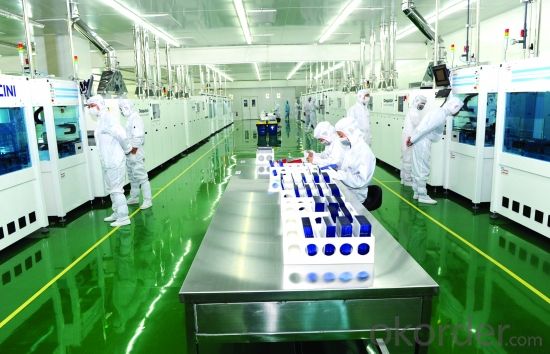
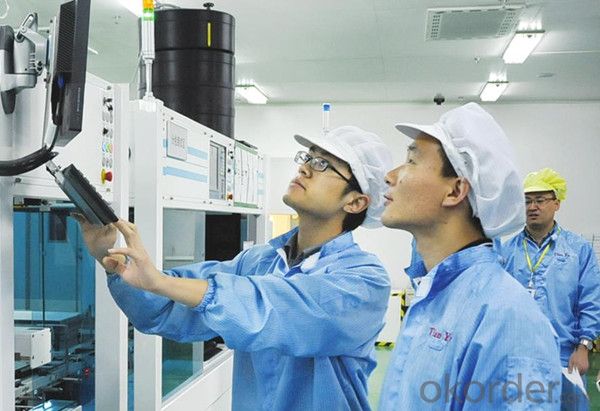
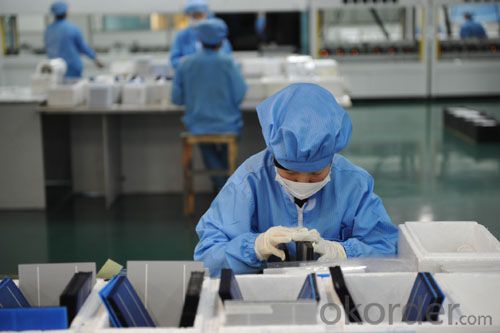
Package Picture of Solar Cells
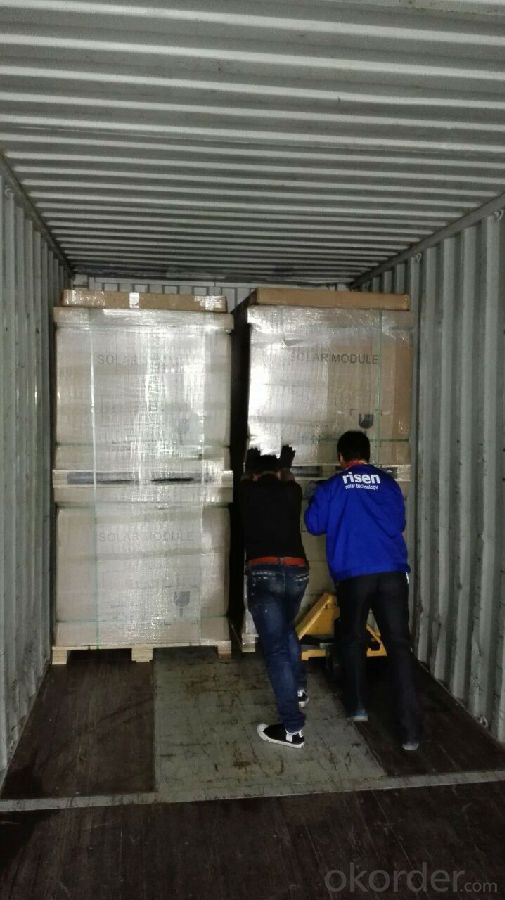
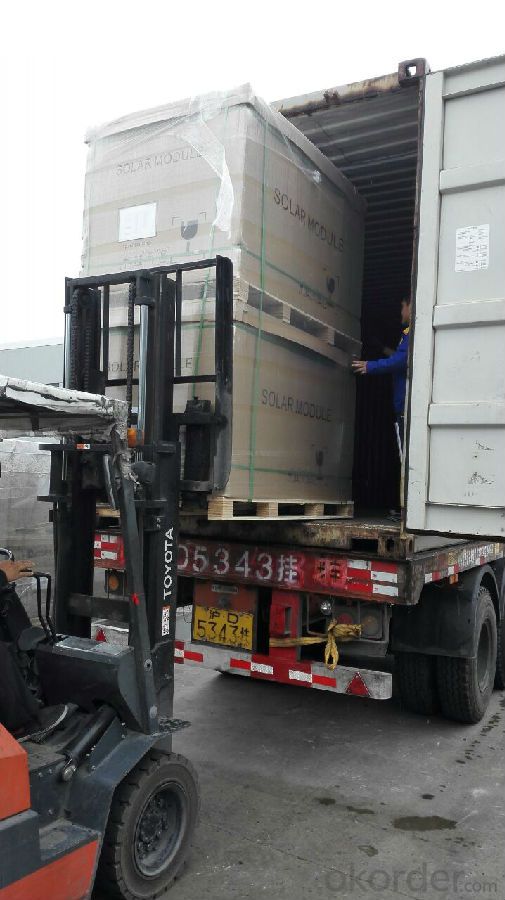
FAQ
We have organized several common questions for our clients,may help you sincerely:
1. What’s price per watt?
A: It’s depends on the quantity, delivery date and payment terms of the order. We can talk further about the detail price issue. Our products is high quality with lower price level.
2. Can you tell me the parameter of your solar cells?
We have different series of cells with different power output, both from c-si to a-si. Please take our specification sheet for your reference.
3. How do you pack your products?
We have rich experience on how to pack the panels to make sure the safety on shipment when it arrives at the destination.
4. Can you do OEM for us?
Yes, we can.
5. How long can we receive the product after purchase?
In the purchase of product within three working days, We will arrange the factory delivery as soon as possible. The perfect time of receiving is related to the state and position of customers. Commonly 7 to 10 working days can be served.
- Q: Can solar cells be used in underwater applications?
- Yes, solar cells can be used in underwater applications. However, special considerations need to be taken, such as using waterproof and corrosion-resistant materials, optimizing the design for low light conditions, and addressing the challenges of transmitting power and data underwater.
- Q: How big are solar cells?
- Solar cells vary in size depending on their application. They can range from small cells measuring a few centimeters in width and length, commonly used in portable electronics, to larger panels that can be several meters in width and length, used in residential or commercial installations.
- Q: How do solar cells perform in low-light conditions?
- Solar cells perform less efficiently in low-light conditions compared to bright sunlight. The amount of electricity generated by solar cells is directly proportional to the intensity of light they receive. Therefore, in low-light conditions, such as during cloudy days or in shaded areas, solar cells produce less electricity. However, advancements in technology have improved the performance of solar cells in low-light conditions, enabling them to still generate some power even under these circumstances.
- Q: Can solar cells be used to power farms or agricultural operations?
- Yes, solar cells can be used to power farms or agricultural operations. Solar panels can be installed on rooftops, fields, or other suitable areas to convert sunlight into electricity. This renewable energy source can provide a consistent and sustainable power supply for various farming activities, such as irrigation systems, machinery, and storage facilities. Additionally, solar power helps reduce reliance on fossil fuels, lowers operational costs, and contributes to a greener and more environmentally friendly agricultural sector.
- Q: Can solar cells be used to power remote locations?
- Yes, solar cells can be used to power remote locations. Solar cells convert sunlight into electricity, making them an ideal renewable energy source for areas that are not connected to the traditional power grid. They can be installed in remote locations to generate electricity and provide a reliable power supply. Additionally, solar cells are low-maintenance and have a long lifespan, making them a cost-effective solution for powering remote areas.
- Q: Can anybody tell me how to make a solar cell at home?
- Well, it's not very difficult to make a solar cell at home,but you do need to prepare 2 glass plates first.
- Q: What are the disadvantages of using solar cells?
- One disadvantage of using solar cells is their high initial cost. The installation and purchasing of solar panels can be expensive for homeowners or businesses, making it less accessible for some people. Additionally, solar energy production is dependent on weather conditions, meaning that cloudy or rainy days can lead to reduced efficiency. Finally, the production of solar cells requires rare materials, such as silicon, which can have negative environmental impacts if not managed properly.
- Q: How do solar cells handle voltage fluctuations?
- Solar cells do not handle voltage fluctuations directly. However, to manage voltage fluctuations, additional components such as voltage regulators or inverters are used in conjunction with solar cells. These components help stabilize and regulate the voltage output from solar cells to ensure consistent and reliable power supply.
- Q: Are solar cells affected by temperature changes?
- Yes, solar cells are affected by temperature changes. As the temperature increases, the efficiency of solar cells decreases. This is because higher temperatures can cause an increase in the electron-hole recombination rate, leading to a reduction in the generation of electricity. Conversely, lower temperatures can improve the performance of solar cells by reducing thermal losses. However, extreme temperature changes can also cause stress and potential damage to the cells, so maintaining a moderate operating temperature is important for optimal performance.
- Q: Can solar cells be used in electric grid stabilization?
- Yes, solar cells can be used in electric grid stabilization. Solar power can be integrated into the electric grid through the use of grid-tied solar systems, which allow excess energy generated by solar cells to be fed back into the grid. This helps stabilize the grid by reducing strain during peak demand periods and providing a cleaner and more sustainable source of electricity. Additionally, solar energy can be combined with energy storage systems, such as batteries, to provide backup power and further enhance grid stability.
Send your message to us
Purchase Solar Cells Bulk - World-Beating 25-Year Life, 17.6% Efficiency
- Loading Port:
- Shanghai
- Payment Terms:
- TT OR LC
- Min Order Qty:
- 1000 pc
- Supply Capability:
- 5000000 pc/month
OKorder Service Pledge
OKorder Financial Service
Similar products
Hot products
Hot Searches
Related keywords


